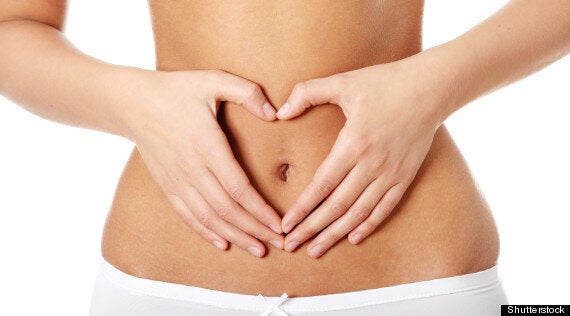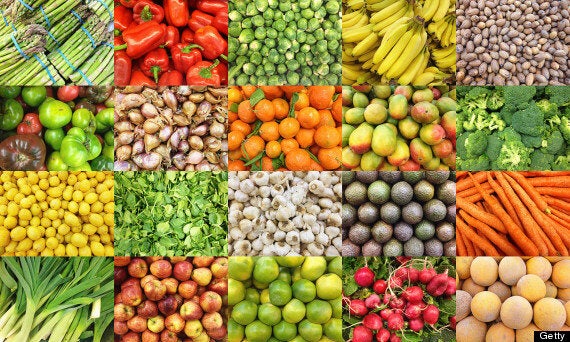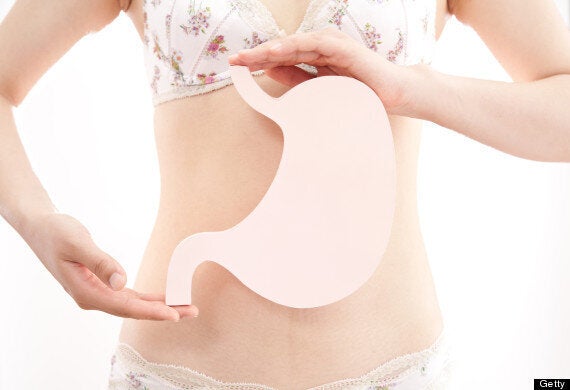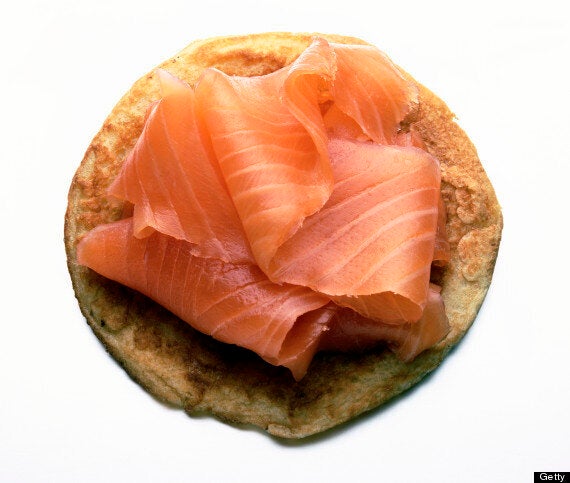Most of us believe the following sentences: fruit is good for you – you should eat as much as you can. Eating three square meals is the best thing. Cereal is a healthy breakfast.
The problem is, all of the above aren’t right. But it proves a point – that a combination of NHS guidelines and various health features have led to a patchwork understanding of what makes good nutrition.
With the latest story to hit the news about saturated fat versus sugars, and conflicting advice about breakfast foods, I decided that it was long overdue to have a nutritionist MOT – to find out what was fact, fiction and just bad science being peddled around.

I headed to The Food Doctor’s clinic in Harley Street to visit Alice Mackintosh, a top nutritionist who features regularly on our pages. I wanted – once and for all – to ask the questions I had around digestion and whether what I was currently eating was actually healthy.
Upon arrival, I’m given various sheets to fill out which include writing down what I’ve eaten for the last three days and a questionnaire around general health.
However, before we got to my diet, Alice wanted to know about my digestion. “You could be eating best diet in the world but if you aren’t assimilating it, you won’t get the benefits,” she says.
If you aren’t comfortable talking to a stranger about your poo or flatulence, you may have to leave that conservatism at the door.
Digestion is something that most of us seem to have an issue with – 40% of us will have some sort of problem during our lives.
One of the issues I have is with bloating – and I tell Alice that since I’ve stopped taking second helpings – or eating until I’m absolutely stuffed – it has gotten better. The other change I’ve made to my diet has been to stop eating fruit straight after dinner, after I read that when you eat them with other types of food, the body can’t digest them as quickly as it would like to, so it ends up fermenting in the gut, which causes bloating.

But – while this is good practice, there’s still a lot she has to tell me about digestion. “Do you find you have a bit of reflux after a meal?”
“Yes,” I reply, “a lot. It feels like I’ve got too much stomach acid.”
When I feel like this, I tend to pop a lot of Rennie, but the most useful thing Alice tells me (gently) is that this is precisely the wrong thing to do. “A lot of people,” she says, “actually tend to have less stomach acid than they need to digest food properly.”
She continues: “There are lots of components to do with digestion. One of the first stages after chewing is that your stomach acid starts working. It starts to trigger digestive enzymes in your small intestine. When you don’t have enough acid, when the food moves through the stomach, it remains undigested. When you have undigested food moving into the large intestine, that’s when you start to get bloating.”
Right, no more second helpings, then.
“Proteins and carbs are big clunky molecules and it does require that stomach acid to digest them. The problem is, stomach acid can be depleted very easily, When you eat Rennie or Gaviscon you take it to quell ‘too much stomach acid’, but actually, it’s very rare to have too much stomach acid.
“What normally happens is that the symptoms of heartburn are similar to not having enough stomach acid. If there is food that isn’t being digested and it comes up – it will have a bit of acid and that’s what you think it causing the pain. But it’s not coming up because of too much acid, it’s because there is too little acid to digest it.”

But when I take Rennie, I tell Alice, it makes me feel a lot better.
“Yes,” she replies, “but the problem with taking Rennie is that yes, it provides relief because it soothes the sphincter to your stomach, but because it reduces the amount of acid, it means you’re not digesting the food even more.”
What’s the solution then, I ask?
“Don’t have massive meals.” (Guilty as charged).
“And, one tip is to have apple cider vinegar in water before meals – swirl it around in your mouth and swallow it, it gets the digestive fire going. The thing people don’t realise is that hot water and lemon and apple cider vinegar actually becomes quite alkaline once it gets absorbed, so they are very supportive for digestion.”
If you’re trying to figure out if you have too much acid or too little, Alice has a very quick test. You mix bicarbonate of soda into water, and then drink it. You need to do it two hours after a meal or when you wake up so that the stomach is empty. If you have an acidic stomach, you’ll burp immediately, otherwise it takes five minutes. As you get older, your stomach produces less acid too.”
I also wanted to know about breakfasts and what’s healthy and what’s not. Cereal, I’m sure is not the best breakfast option – often it’s packed with extra sugar, and will make sure blood sugar spike and then drop.
I’ve been trialling eating eggs and hummus in the morning (which is not endearing me to my work colleagues, let me tell you) because I’ve always preferred protein in the morning, and it’s the only thing that seems to fill me up until lunchtime.
“Eggs and hummus is fantastic,” says Alice, “because you’re mixing complex carbs with protein and you want to try and do that for most of your meals. It’s good that you don’t worry about what other people think. But also have a think about snacking rather than leaving long gaps between food.
“You want to be eating every two hours, so keep your snacks small but packed with energy.”

Salmon and brown bread is a good way of mixing protein and carbs
It’s about balancing your blood sugar and Alice isn’t the first person to expound this. I love Dr Karg crackers but she advises mixing them with some hummus or guacamole to add protein. “A really good company is called Savioursnacks.com, who have protein bars, kale chips – really healthy, non-sugary things.”
The banana has become the healthy go-to snack for people in need of an energy boost. But like all other fruit, if consumed on its own, will shoot your blood sugar up. “Combine it with nuts or it works just like other sugars.”
My last two ailments are sore muscles after a workout and clear skin. For the former, Alice recommends good doses of magnesium. “It’s so good for your nervous system. A lot of athletes take it to calm their muscles. You can have Epsom salt baths which really soothe the muscles – in it are magnesium and sulphur. If you put in half a glass of salts – you absorb it through your skin.”
Epsom salt baths are also great for people who have trouble getting to sleep as it really “can zonk you”.
For clear skin, any kind of green juice is a great support. You can buy Pro Greens or any green vitamin supplement and mix it in with your orange juice in the morning. It’s also great for your immune system, which can be further supported by zinc – which is found in seafood, nuts and seeds.
By the end of my session, I am tottering out of the door with stacks of helpful info and recipes on how to make my own hummus “because it tastes so much better”, says Alice and food bags of Food Doctor seeds and spelt grains.
Four weeks on, I’ve noticed an improvement – while the rest of the office sputters through the first onset of winter colds and sniffles, mine seems to be staved off by all the nutrients I am now putting in my body.
The bottom line is that if you have never been to a nutritionist, I would advise you wholeheartedly to make a visit. There is only so much a magazine or website can tell you, and usually, when touting a new superfood, there is rarely is expert advice to tell you how to apply it properly.
For instance we all know fruit is meant to be good for you, but most of us don’t know how loaded it is with sugar, particularly fruit juices. Learning about food combining is also a big asset, as is finding out how your gut really works.
One of the biggest helps was a seven-day eating plan that Alice put together for me, along with snacks and possible options to choose when eating out.
An example below:
BREAKFAST
X2 pieces of wholegrain toast with spread of nut butter (eg, almond butter)
LUNCH
Large green salad with avocado, quinoa or chicken, parsley and mushrooms, garlic and sun blush tomatoes.
DINNER
Chicken or prawn curry, with coconut milk, cauliflower, mange tout and baby sweetcorn. Avoid naan bread and go for rice instead, brown or wholegrain basmati if possible.
SNACKS
1/2 avocado or guacamole on oatcakes or Ryvita
or
Kale chips or a boiled egg
EATING OUT TIPS
- Avoid the bread when it comes round and go for a bowl of olives instead or a Virgin Mary with tabasco and Worcester sauce.
- If having two courses, aim for salad, soup or smoked salmon/scallops as a starter. Ask for dressing on the side for salads and drizzle 1 tbsp of olive oil over if possible.
- For main courses, always avoid the pasta, pizza, noodles, and go for protein with veg. Get a side dish of veg if needed.
- Don’t panic if there are only sautéed/fried things on the menu such as fish or meat, this is still better than lots of carbs from a weight point of view.
- Avoid desserts for now, and if you do have one, share with others so its max a spoonful only!
To book an appointment with Alice, visit www.thefooddoctor.com. A consultation costs £125 and a follow-up appointment is £95.